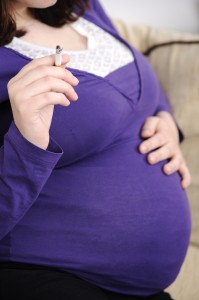This article was originally written by Paul Christiansen for the Lifestyle Elf website, you can find the original here.
During 2010/11 there were 1.53 million hospital admissions for illnesses directly attributable to smoking in the UK. These admissions, along with other smoking-related expenses, cost the NHS approximately £5 billion pounds per year.
Fortunately, the NHS is spending £88.2 million per year on cessation treatments, many of which have been repeatedly demonstrated to be highly efficacious. Indeed, Dr Andrew Jones and I recently wrote a Mental Elf blog on a Cochrane review that reported impressive outcomes for several pharmacological smoking cessation treatments.
Sounds good doesn’t it? A relatively small outlay on cessation treatment should have a massive impact on reducing smoking-related illness saving the NHS billions.
Things are, of course, not so simple; quitting is one thing staying abstinent is another. Indeed, 75% of quitters relapse within 12 months (Agboola, 2009) and, problematically, frequency of previous relapses are associated with decreased chances of maintaining abstinence following future attempts to quit (Zhou, 2009).

Three out of four people who quit smoking will start again within one year
The efficacy of relapse prevention treatments are the focus of this Cochrane review. The authors analyse the efficacy of behavioural based strategies (e.g. face to face and web-based counselling) of differing durations, as well as pharmacological treatments (e.g. nicotine replacement therapy [NRT] and bupropion).
This review also investigates whether treatment efficacy differs in people quitting for different reasons, i.e. forced cessation (due to pregnancy, hospitalization or military training) or voluntary cessation.
Methods
The authors conducted a meta analysis on 63 studies that explicitly focused upon relapse prevention and had a minimum 6 month follow up.
The primary outcome was the number of individuals who maintained abstinence in the longest follow-up. It is notable that the authors reported risk ratios (RR), rather than odds ratios. Risk ratios are generally a conservative measure (unless event rates are particularly low). Analyses were conducted separately for ‘trials in abstainers’ and ‘trials in those allocated before quit date’.
Trials in abstainers
This refers to those who were abstinent on presentation to the trial and includes special populations (pregnant, hospitalisation and military recruits; behavioural interventions only) as well as those from unselected populations (those who quit voluntarily or as part of a program; behavioural and pharmacological interventions).
Trials in those allocated before quit date
Only behavioural interventions are reported for those assigned to treatment groups before their quit day, (although one behavioural + NRT is reported). Analyses in this group are broken down into different forms of intervention.
Results
Trials in abstainers
Special populations:

Although many women quit smoking during pregnancy, subsequent relapse remains high
- There was no evidence that any behavioral relapse prevention interventions had a significant effect on relapse following:
- - birth (RR 1.04 95% CI 0.95 – 1.11),
- - the postpartum period (RR 1.08 95% CI 0.99 – 1.19)
- - or in those hospitalized for other reasons (RR 0.94 95% CI 0.78 – 1.13).
- The picture in military recruits was less clear, there was some evidence that behavioural interventions could increase abstinence (OR [reported in this case only] 1.23 95% CI 1.07-1.41) although the absolute rates of abstinence in this sample were still very low.
Unselected populations:
- - There was no significant impact of behavioural relapse prevention interventions in unaided quitters (RR 1.08 95% CI 0.98 – 1.19)
- - Although there was some evidence for the efficacy of NRT (RR 1.24 95% CI 1.04 to 1.47).
With regards to those who quit through formal treatment behavioural interventions (RR 1.00 95% CI 0.87 -1.15), NRT (RR 1.04 95% CI 0.77 to 1.40), bupropion (RR 1.15 CI 0.98 to 1.35) and bupropion in combination with NRT (RR 1.18 95% CI 0.75 to 1.87) all failed to reduce relapse. However, varenicline (1 study; RR 1.18 95% CI 1.03 to 1.36) and rimonbant significantly reduced relapse although the latter recently had its license withdrawn due to safety concerns.
Trials in those allocated before quit date
Data revealed a similar pattern of results to the abstainers; there was no evidence that relapse rates were reduced by:

Evidence for the efficacy of telephone and face-to-face counselling is lacking- face to face intervention (RR 1.01 95% CI 0.80 to 1.27),- - extended contact phone calls (RR 1.06 95% CI 0.90 to 1.23),
- - or web support (RR 1.27 95% CI 0.70 to 2.31).
Furthermore telephone counseling in conjunction with NRT also failed to reduce relapse (RR 1.28 95% CI 0.94 to 1.75).
Conclusions
This review highlights two fundamental issues in the area of relapse prevention in ex-smokers. Firstly, there was a near universal failure to detect any clinically efficacious interventions. This is perhaps surprising, many pharmacological interventions for smoking cessation have very good efficacy.
Indeed, it is notable that one of the only relapse prevention techniques that had a significant effect on relapse prevention was varenicline which is also the most efficacious quitting agent.

There are many effective interventions to help you quit, but this is only half the battle
Then again, the results reported may not be so surprising. The overall GRADE quality of the reviewed studies was relatively low; sample sizes tended to be relatively small and behavioural treatments focused on single treatments rather than addressing the multiple causes of relapse such as craving, stress and cue reactivity in a more holistic manner.
Indeed, a combination of behavioural and incentive based strategies are associated with reduces relapse rates at 6 months (Gadomski, 2011). Furthermore, we are starting to see a first wave of studies looking at E-Cigarettes which have promising results (Etter, in press).
So although the current review seems to offer little encouragement for quitters, tailored interventions dealing with multiple aspects of the causes of relapse as well as continuing pharmacological-based developments offer some real hope.
Links
Hajek P, Stead LF, West R, Jarvis M, Hartmann-Boyce J, Lancaster T. Relapse prevention interventions for smoking cessation. Cochrane Database of Systematic Reviews 2013, Issue 8. Art. No.: CD003999. DOI: 10.1002/14651858.CD003999.pub4.
Jones, A and Christiansen, P. New Cochrane review finds that NRT, bupropion and varenicline are effective treatments for smoking cessation. The Mental Elf, 31 May 2013.
Agboola SA, Coleman TJ, McNeill AD. Relapse prevention in UK Stop Smoking Services: a qualitative study of health professionals’ views and beliefs. BMC Health Serv Res. 2009 Apr 24;9:67. doi: 10.1186/1472-6963-9-67.
Zhou X, Nonnemaker J, Sherrill B, Gilsenan AW, Coste F, West R. Attempts to quit smoking and relapse: factors associated with success or failure from the ATTEMPT cohort study. Addict Behav. 2009 Apr;34(4):365-73. doi: 10.1016/j.addbeh.2008.11.013. Epub 2008 Nov 24. [PubMed abstract]
Gadomski A, Adams L, Tallman N, Krupa N, Jenkins P. Effectiveness of a combined prenatal and postpartum smoking cessation program. Matern Child Health J. 2011 Feb;15(2):188-97. doi: 10.1007/s10995-010-0568-9. [Pubmed Abstract]
Etter, JF Bullen, C. A longitudinal study of electronic cigarette users. Addictive Behaviors, in press. doi: 10.1016/j.addbeh.2013.10.028. [Science direct abstract].
No comments:
Post a Comment